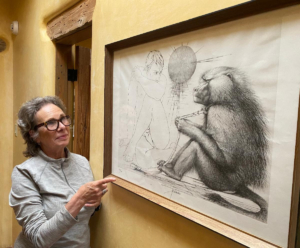 Are you a fan of New Mexico birds and New Mexico landscapes? Do you wonder about the truly groundbreaking developments in science over the last century? And how do we look at environmental issues with a balanced viewpoint informed by quantitative evidence?
Are you a fan of New Mexico birds and New Mexico landscapes? Do you wonder about the truly groundbreaking developments in science over the last century? And how do we look at environmental issues with a balanced viewpoint informed by quantitative evidence?
This fall RENESAN highlights the exotic and the familiar in its broad cross-section of science courses. Join us to dig into big issues and fascinating details from the world of science:
- Jay Shelton explores the quantitative side of environmental topics in Quantitative Environmentalism.
- James Kemper looks at climate change in our backyard in Climate Change Impacts in the Southwest.
- Creve Maples walks to the edge of science to consider today’s big theories in Science at the Edge: Welcome to the Real Twilight Zone.
- Janie Chodosh, environmental educator and writer, invites all levels of birders to learn about our feathered friends in Birds of New Mexico. She also shares her research into the elephants of India and the life of Dr. Kushal Konwar Sarma, India’s elephant doctor, in The Elephant Doctor of India and the Elephants of Assam.
- Emeritus Professor of Anatomy and Anthropology Jane Phillips-Conroy explores her research into the diversity and wonder of baboons in African Baboons: Endless Forms Most Beautiful and Most Wonderful.
- Geologist Albert Shultz helps us understand how New Mexico landscapes–such as the Santa Fe Foothills, El Malpais, Ghost Ranch, and White Sands–were formed in The Geology of New Mexico Landscapes.
- Jim Baker invites us to enjoy the enchantment of New Mexico’s night sky as host to a trip Evening Under the Stars.
Come join us!

 Join outstanding RENESAN instructors and performers to learn about and experience multiple universes of music:
Join outstanding RENESAN instructors and performers to learn about and experience multiple universes of music:
